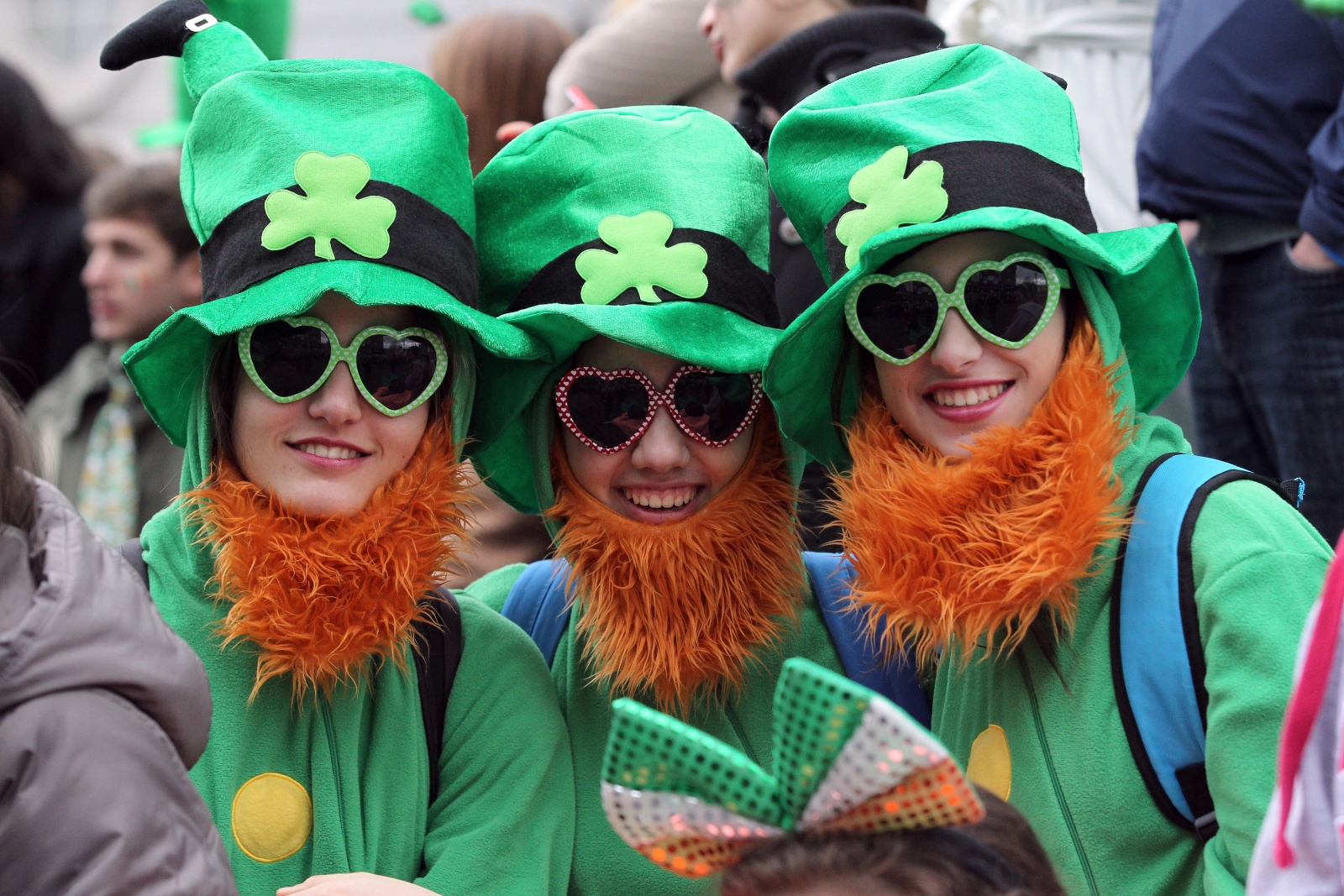Gallery
Photos from events, contest for the best costume, videos from master classes.
 |  |
 |  |
 |  |
 |  |
 |  |
 |  |
The Colors of St. Patrick’s Day in Popular Culture. The colors associated with St. Patrick’s Day have become an integral part of popular culture, from fashion to advertising. In the United States, for example, St. Patrick’s Day is often associated with green beer, green attire, and green decorations. Yet green remains the color associated with St. Patrick’s Day and Ireland throughout the world, largely due to the Catholic diaspora and its association with nationalism. Today, orange is a proud symbol of Northern Irish identity and is often displayed during Saint Patrick’s Day celebrations. White, the third color, represents peace and purity. It’s a symbol of the Christian faith and is often displayed alongside green and orange to represent the unity and harmony that Saint Patrick sought to bring to the Yet green remains the color associated with St. Patrick’s Day and Ireland throughout the world, largely due to the Catholic diaspora and its association with nationalism. Another color often seen on Saint Patrick’s Day is gold. Gold is associated with wealth, luck, and prosperity. According to Irish legend, there is a pot of gold at the end of the rainbow. So, it makes sense that gold would be a popular color on Saint Patrick’s Day. Many people wear gold on Saint Patrick’s Day as a way to attract good luck. In the earliest recorded American celebration of the day, banquets toasting Ireland and St. Patrick took place in Boston in 1737. By the 1760s, annual parades were being held in New York and on Yet green remains the color associated with St. Patrick’s Day and Ireland throughout the world, largely due to the Catholic diaspora and its association with nationalism. The meaning of the color blue in Ireland. In addition to St. Patrick’s Day blue being the color of The Order of Saint Patrick, and the color in which this patron saint was first depicted, the meaning of the color blue is also tied to English rule in Ireland. King Henry VIII of England assumed the throne in 1509. St. Patrick and the Shamrock. The association of green with St. Patrick’s Day is deeply rooted in the legend of St. Patrick himself. According to tradition, St. Patrick, the patron saint of Ireland, used the three-leaf clover, or shamrock, to explain the Holy Trinity to the pagan Irish. Before the sea of green flooded every street and city skyline on March 17th, the original color associated with St. Patrick was a shade of light, sky-toned blue—a hue that has come to be called “St. Patrick’s Blue.” In fact, Ireland’s earliest depictions of Patrick didn’t have him wrapped in green robes but rather in robes of Every year on March 17, people around the world celebrate St. Patrick’s Day, honoring the patron saint of Ireland. But what started as a religious feast has evolved into a vibrant, global celebration of Irish culture. However, blue still plays a symbolic role in Ireland: Since 1945, the flag representing the president of Ireland has a gold harp with a dark blue background – the color known as St. Patrick’s In conclusion, the colors associated with St. Patrick’s Day have a rich history and symbolism that extends beyond their association with the shamrock and Saint Patrick’s Day. Green, orange, and white are colors that represent Ireland’s love for its land, its people’s connection to the earth, and the country’s complex history and What was St. Patrick’s original color? Patrick was first represented by the color blue. This 13th-century image of St. Patrick depicts Ireland's patron saint in a blue robe. St Patrick’s Day around the world. St Patrick’s Day is widely recognised throughout the United States as a celebration of Irish and Irish-American culture. The biggest St Patrick’s Day parade in the world is in New York City. Elsewhere in the States, the Chicago River is dyed green with an eco-friendly powder, an event that dates back to The Colors of St. Patrick’s Day: A Symbolic Representation. St. Patrick’s Day is often associated with three primary colors: green, orange, and white. These colors hold significant meaning and are deeply rooted in Irish history and tradition. Green: The Color of Ireland. Green is the most prominent color associated with St. Patrick’s Day Yet green remains the color associated with St. Patrick’s Day and Ireland throughout the world, largely due to the Catholic diaspora and its association with nationalism. However, blue still plays a symbolic role in Ireland: Since 1945, the flag representing the president of Ireland has a gold harp with a dark blue background – the color While green has become more commonly associated with Ireland and St. Patrick’s Day celebrations in modern times, the deep-rooted connection between Ireland and the color blue remains an important part of the country’s heritage and tradition. St. Patrick’s Blue Association: The Transition to Green To save you scrolling, you’ll find some speedy need-to-knows about the first color associated with St. Patrick’s Day below: 1. Yep, it all began with blue, not green. Although people wear green on St. Patrick’s Day, early depictions of St. Patrick show him clothed in fine blue robes. In fact, in Saul Church, which is on the site where St Yet green remains the color associated with St. Patrick’s Day and Ireland throughout the world, largely due to the Catholic diaspora and its association with nationalism. However, blue still plays a symbolic role in Ireland: Since 1945, the flag representing the president of Ireland has a gold harp with a dark blue background – the color
Articles and news, personal stories, interviews with experts.
Photos from events, contest for the best costume, videos from master classes.
 |  |
 |  |
 |  |
 |  |
 |  |
 |  |